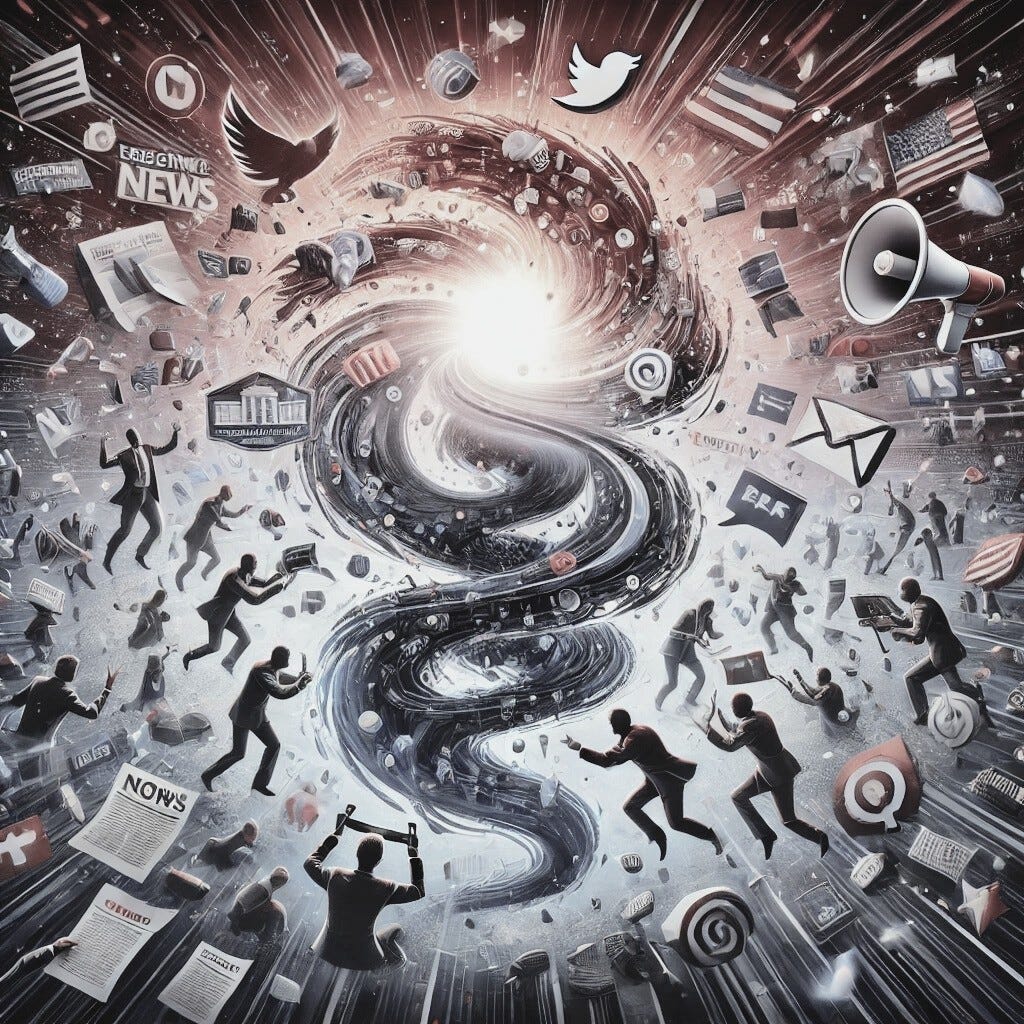For those following the unfolding drama of American politics, the past few weeks have felt chaotic. That chaos, however, is not accidental – it’s a deliberate strategy. The goal isn’t just to govern; it’s to keep the public and media constantly scrambling, unable to focus or resist effectively.
If you want a glimpse into how the early weeks of Trump’s second administration operate, listen to what Steve Bannon told PBS Frontline in 2019:
“The opposition party is the media,” said Bannon to Michael Kirk. “And the media can only, because they’re dumb and they’re lazy, they can only focus on one thing at a time. …All we have to do is flood the zone. Every day we hit them with three things. They’ll bite on one, and we’ll get all of our stuff done. Bang, bang, bang. These guys will never — will never be able to recover. But we’ve got to start with muzzle velocity.”
Muzzle velocity is the speed at which a bullet leaves a gun. It essentially sets the tone for everything that happens next in the bullet’s flight. In politics, this translates to rapid-fire policy changes, executive orders, and media spectacles designed to dominate attention and prevent coordinated opposition.
Bannon’s strategy is clear: overwhelm the system. Distract. Keep opponents off balance. Trump, who understands this strategy instinctively, has wasted no time. By the end of January 2025, he had signed 46 executive orders—a quarter of his total from his first term. His administration has pushed a barrage of policies on tariffs, transgender rights, and tech regulations. The result? An information overload so dense that the public, the media, and even political opponents struggle to keep up. This isn’t just governance; it’s political warfare through information overload.
When the media is inundated with an excessive amount of information from multiple directions simultaneously, it becomes difficult for them to focus. This constant barrage keeps the opposition off-balance and unable to respond effectively to every move. And at the same time making it challenging for individuals to process and respond coherently.
The Illusion of Power
The message they try to pass is clear: Trump is in charge. He is the law. If he orders spending to stop, it stops. If he declares birthright citizenship over, it’s over. But that’s not how power actually works.
Trump wants to be the centre of attention. As a master of distraction, he understands that as long as the media is fixated on his latest provocative statement, he dictates the conversation. This creates an illusion of unchecked authority—one where declarations appear as definitive actions rather than challenges bound by legal and institutional constraints.
The reality is different. Trump’s power has limits. The U.S. Constitution, the courts, and even Congress remain obstacles. The Republican Party holds only a slim majority in the House and a 53-seat Senate majority—hardly a guarantee of legislative success. Many of his most audacious proposals would collapse under legal or political pressure. And failure is something he wants to avoid at all costs.
Instead, he relies on optics and executive actions, using speed and spectacle to create the illusion of absolute power. The media struggles to keep up. Political opponents scramble to respond. This is not accidental—it’s the whole point. But what looks like a strategy's strength is also its weakness.
Authoritarians rely on the perception of inevitability. They want you to feel powerless, to believe that resistance is futile. That’s not true. When someone feels threatened, they don’t freeze forever. They seek support. They mobilise. They organise. They push back.
Resisting authoritarians requires more than just voting or passive protest. It demands active, direct engagement. Organise in your communities, build solidarity and form alliances with those who share your concerns. Work together to amplify your voices. Use social media and other platforms to spread awareness and mobilise support.
Most of all, remember: illusions only hold power if we accept them as reality. Trump’s strength is not absolute—it is an engineered perception. And the surest way to dismantle it is to refuse to play by its rules.
This article is free to read, but if you found it useful, please consider subscribing or making a small donation at my Buy Me A Coffee page below. The Climate Historian is an independent publication, entirely supported by readers like you.




